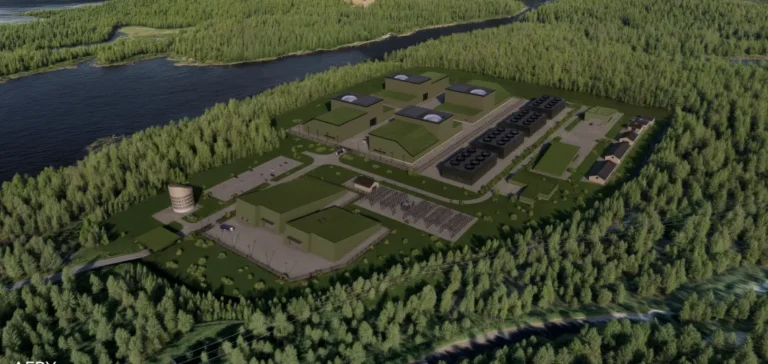Fensfjorden Kjernekraft AS, a new joint venture between Norsk Kjernekraft AS and the municipality of Austrheim, plans to build at Mongstad a facility comprising several Small Modular Reactors (SMRs) capable of delivering up to 1,280 MWe. This output is roughly double that of Norway’s largest hydropower station, which would place the future site among the country’s most significant electricity sources. The chosen location borders Equinor’s infrastructure, currently Norway’s largest carbon-dioxide emitter. The developers believe that once in operation the plant could eliminate all local emissions while supporting new industrial activity.
Development plan
The newly incorporated company will launch an environmental impact assessment in cooperation with national authorities, a prerequisite before any licence applications are filed. Norsk Kjernekraft notes that the schedule will depend on “efficient and predictable processes” from regulators. The partners are targeting initial commissioning in 2035, a date that would coincide with the expected rise in electricity demand in the west of the country. The governance structure combines the local public sector with an experienced private developer to share financing and acceptance risks.
SMR technology, still absent in Norway, is distinguished by modules manufactured in factories and transported to site, limiting construction time and cost. Each unit will occupy a small footprint, the total land use amounting to just one-thousandth of that of other zero-emission sources, according to preliminary estimates. The project answers the need for firm generation to balance a system heavily reliant on variable hydropower. The promoters argue that the dispatchable nature of nuclear would complement dams during dry periods or winter peaks.
Industrial outlook
“With the establishment of Fensfjorden Kjernekraft AS, the municipality takes an important step towards the potential realisation of a nuclear plant in the commune,” said Mayor Morten Sognnes, highlighting the long-term value opportunity for the area. Jonny Hesthammer, chief executive of Norsk Kjernekraft AS, praised the partner’s “energy and good cooperation”, noting that geological and logistical studies confirm “excellent conditions for success”. The stakeholders state that low-carbon electricity would attract new manufacturers eager to decarbonise their processes. The project fits into the national strategy to maintain the competitiveness of petrochemical complexes while meeting climate targets.
If permits are granted within the envisaged timeframe, the first unit could feed the grid in about a decade, followed by additional modular phases up to full capacity. The developers estimate that the plant would remove the direct emissions of the Mongstad cluster while freeing origin certificates for other sectors that are harder to electrify. Norway would then become one of the first Nordic countries to integrate large-scale SMRs into its energy mix. “Our analyses show that Austrheim brings together the key factors: access to cooling, proximity to high-voltage lines and immediate industrial demand,” Hesthammer concluded.






















